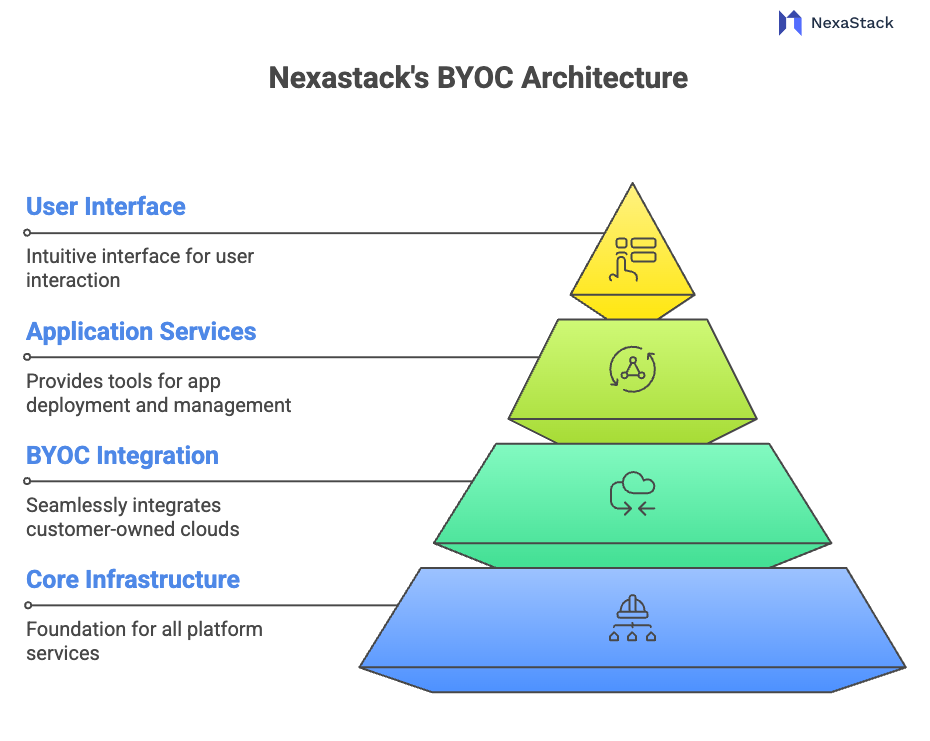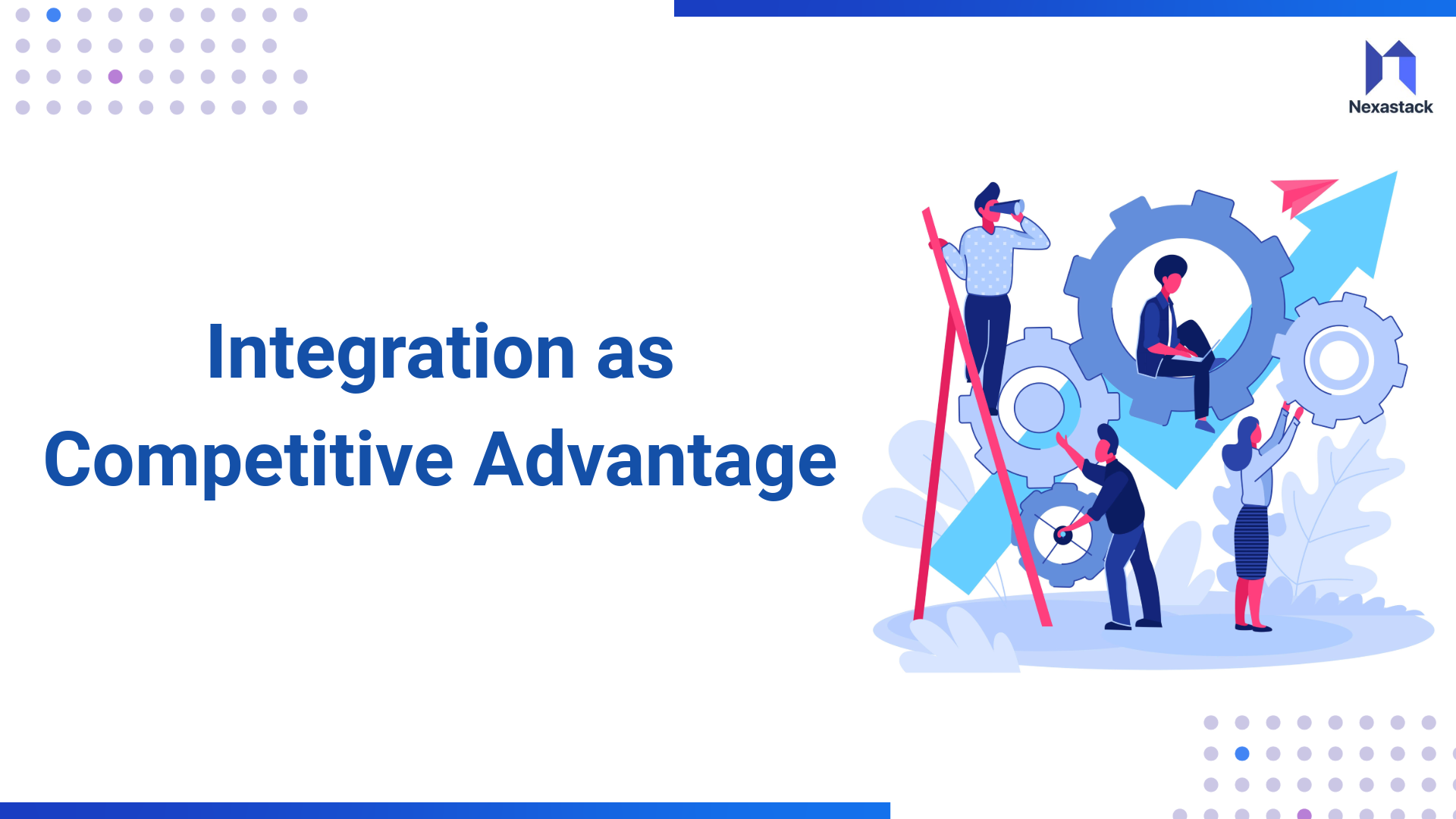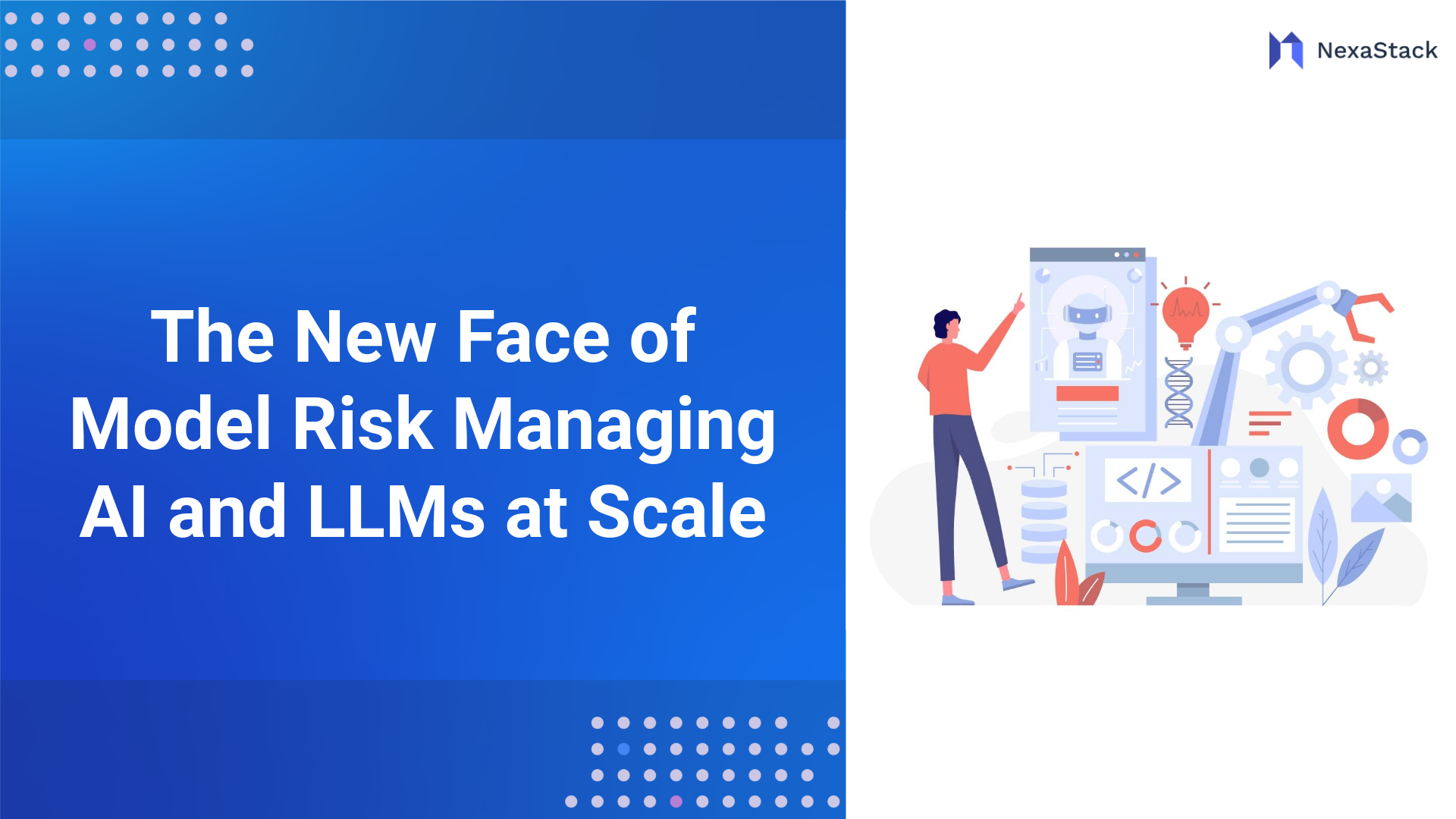Real-World Applications: Nexastack in Action
Case Study: Financial Services Firm
A leading financial institution integrated Nexastack into its existing AWS and Azure environments. By adopting the BYOC strategy, the firm achieved:
-
30% Reduction in Cloud Expenditures: Through intelligent resource allocation and auto-scaling.
-
Enhanced Compliance: Automated adherence to financial regulations across all operations.
-
Improved AI Model Performance: Optimized deployment and management of predictive analytics models.
The Architecture Behind Nexastack’s BYOC-Oriented Platform
 Figure 1: Nexastack BYOC Architecture
Figure 1: Nexastack BYOC ArchitectureTo truly appreciate BYOC's transformative impact, it’s essential to understand the architectural design that powers it.
-
Modular and Cloud-Agnostic Core:
Nexastack uses a modular architecture, allowing seamless integration with multiple cloud platforms—AWS, Azure, GCP, and private cloud—without platform-specific constraints. -
Containerized Workloads and Kubernetes Orchestration:
By leveraging Kubernetes, Nexastack ensures that containerised AI workloads can be deployed, scaled, and monitored consistently across hybrid environments. -
Data and Model Abstraction Layer:
This layer separates AI models and data pipelines from the underlying infrastructure, enabling reusability, portability, and flexibility. -
Integrated Observability Stack:
A comprehensive observability layer offers real-time visibility into AI agent operations, infrastructure performance, and cost analytics, enabling proactive governance.
Use Cases Across Industries: Transforming AI Deployment with BYOC
BYOC’s flexibility enables organizations across sectors to manage AI workloads at scale, regardless of infrastructure diversity.
-
Healthcare
Hospitals use BYOC to process sensitive patient data locally (on-premise or in private clouds) while leveraging public clouds to train large AI models. This ensures compliance with HIPAA while accelerating diagnostic intelligence. -
Retail and E-commerce
Retailers implement BYOC to deploy AI-powered recommendation systems across cloud regions closer to customers, improving latency and personalization. -
Manufacturing
Smart factories leverage BYOC to deploy predictive maintenance AI agents on edge infrastructure while syncing model updates via the cloud. -
Government and Public Sector
BYOC ensures that classified data and AI workloads remain within national data centres, satisfying data sovereignty laws and security protocols.
The Role of Agentic AI in a BYOC Framework
Agentic AI is reshaping how applications operate by introducing autonomous, goal-driven agents capable of dynamically interacting with data and environments.
How Nexastack Enables Agentic AI:
-
Distributed Agent Orchestration: AI agents can be deployed across different clouds and environments based on function, need, and proximity to data.
-
Autonomous Resource Management: Agents dynamically request compute, storage, or bandwidth based on operational context, facilitated by Nexastack’s orchestration engine.
-
Self-Healing Workloads: Agents monitor their performance and reconfigure themselves (or spin up replacements) to maintain operational continuity.
Comparison: Traditional Cloud-Native AI vs. BYOC-Enabled AI Infrastructure
|
Feature
|
Traditional Cloud-Native
|
BYOC with Nexastack
|
|
Cloud Flexibility
|
Limited to one provider
|
Multi-cloud and on-prem support
|
|
Data Sovereignty
|
Difficult to enforce
|
Enforced via deployment localization
|
|
Vendor Lock-In Risk
|
High
|
Low
|
|
AI Agent Scalability
|
Manual or provider-specific
|
Autonomous and cross-cloud
|
|
Observability & Cost Control
|
Fragmented and siloed
|
Unified, intelligent, and automated
|
|
Compliance Automation
|
Requires manual oversight
|
Policy-as-code and auto-enforcement
|
Conclusion: Embracing the Future with Nexastack's BYOC Strategy
The BYOC approach, exemplified by Nexastack's platform, offers a unified, scalable, and secure path forward for enterprises navigating the complexities of AI infrastructure. With built-in automation, observability, and compliance features, Nexastack doesn't just make AI possible across clouds—it makes it practical, powerful, and future-ready.
As businesses become more AI-driven, the need for cloud-agnostic flexibility, operational control, and security intensifies. Embracing BYOC ensures that your AI initiatives are compliant, cost-effective, and strategically aligned with long-term digital transformation goals.





